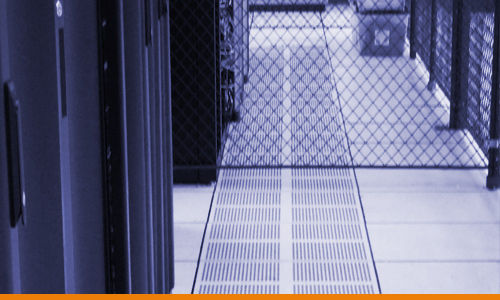Could the Move to Cloud Spell the End of Data Centers?
September 25, 2015Cost Benefits of Managed Cloud Vs Colocation
On August 15, 2015, Wall Street Journal writers Robert McMillan and Rachael King dropped the bomb: Netflix Is Ready to Pull Plug on Its Final Data Center. “It would be one of the first big companies to run all of its information technology remotely, in what’s known as the public cloud.”
Netflix announced it planned to shut down the last of its Data Centers by the end of the summer. “For our streaming business, we have been 100% cloud-based for customer facing systems for some time now, and are planning to completely retire our Data Centers later this summer.”
Getting out of infrastructure is a big move—especially for Netflix. They’re currently using 36% of all Internet bandwidth. But just because they sold off their Data Centers and run the bulk of their systems in the cloud, it doesn’t mean that their servers don’t utilize colocation in Data Centers.
Security Challenges
Running corporate servers and streaming blockbusters like Jurassic World and Season 4 of House of Cards on public cloud is one thing.
Security is not the challenge here. Speed is the objective.
Securing employee records and company financials is something else—especially when the fed is cracking down on healthcare and financial privacy compliance. The public cloud is simply not as secure as Colocation.
Definition of Terms
Cloud is not a technology; it’s an approach of combining many servers into large computing pools and dividing single servers into multiple virtual machines. That grouping and dividing enables scalability. In other words, a company that uses cloud can expand their company enterprise by adding more servers—or scaling up.
The difference between public cloud and private cloud
Public Cloud: Public cloud happens on shared infrastructure. The identity of server tenants is kept confidential but the servers are shared. Hosting is a good example of many companies using public cloud.
Private Cloud: This takes place on a privately owned infrastructure behind a firewall. Private cloud tends to be single-tenant, driving up cost. People who are adamant about staying single-tenant find their enterprise is less easily scalable.
The Difference Between Cloud and Colocation
Cloud: Your virtual server is managed by you, but housed within an actual server owned by the Cloud-hosting company at a Data Center.
Colocation: Your server is owned and managed by you, but housed in a secure, environmentally controlled space at a Data Center.
In either case, your enterprise is still sitting on a physical server in a Data Center. The difference is who owns that server.
Cloud doesn’t have to be an all or nothing proposition—neither does colocation.
Telehouse was curious to determine when cloud and colocation made the most economic sense. Our price comparison findings might surprise you.
The least common denominator in either approach—Cloud or Colocation—is a single SERVER. That is the basis for this cost comparison.
When Managed Cloud Offers the Biggest Cost Benefit
For small companies with a corporate website, a single-server cloud solution gives the biggest bang for your buck. You’re not buying infrastructure, so startup costs are low.
Small Server
Features: 1 CPU, 4G RAM, 200G hard drive. This works if performance is not critical. In other words, this would not be a good fit for an ecommerce site or one that streams a lot of video.
With Amazon Web Service you can set up an account, log on and begin constructing your enterprise right away, making it easy to do and not requiring an IT team.
The approximate monthly cost comparison is:
- AWS $64.65
- xCloud Small Provider $105.00
- Standard Colocation $119.00
It’s simple and is perfectly aligned to what a small startup or bootstrapping operation can afford. But things change dramatically as you move up in server size.
When Colocation Offers the Biggest Cost Benefit
When you don’t have to buy new equipment, or opt to keep your current network equipment and simply transfer it to a colocation space. This reduces the initial cost layout.
Mid-Sized Server
For all-in-one processing or a dedicated role—email server, webserver.
Features: 4 CPU, 16G RAM, 500G hard drive
The approximate monthly cost comparison is:
- AWS $230
- xCloud Small Provider $255
- Standard Colocation $127
Large Server
Used for a dedicated role—email server, project server.
Features: 16 CPU, 32G RAM, 1.2T hard drive
The approximate monthly cost comparison is:
- AWS $730.88
- xCloud Small Provider $720.00
- Standard Colocation $180.00
5 Reasons to Use the Cloud:
- Cost savings
- Ease of use and setup
- Unlimited storage capacity allows scalability
- Automated backups
- Lower IT staff costs, as infrastructure and software are maintained by the provider
- Accessibility: Housing files and software applications such as Sales Force remotely instead of on individual computers make it accessible from any location
5 Reasons to Colocate:
- Cost savings through outsourcing IT staff
- Redundancy [Telehouse can back up in different geographical regions]
- Infrastructure Management costs less [outsourced IT experts]
- Peak data security levels
- Drive down bandwidth costs through access to Internet Exchanges
The Best of Both Worlds
Both Managed Cloud and Colocation can give you greater security and adaptability in your IT enterprise. Understanding your server requirements will help you make the best decision for your business and your bottom line.
You may choose to use both Cloud and Colocation services. Talking with an expert can assess your needs and provide a cost comparison. We think Data Centers will be around for a long time to come.



